
How to Use ESP32 WROOM 32: Examples, Pinouts, and Specs
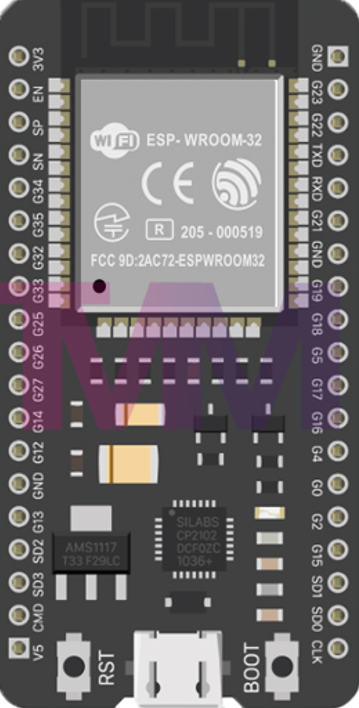
 Design with ESP32 WROOM 32 in Cirkit Designer
Design with ESP32 WROOM 32 in Cirkit DesignerIntroduction
The ESP32 WROOM 32, manufactured by Microcontroller (Part ID: ESP32), is a powerful and versatile microcontroller module. It features integrated Wi-Fi and Bluetooth capabilities, making it an excellent choice for Internet of Things (IoT) applications, smart devices, and embedded systems. With its dual-core processor, low power consumption, and extensive GPIO options, the ESP32 WROOM 32 is designed to handle a wide range of tasks, from simple sensor monitoring to complex data processing.
Explore Projects Built with ESP32 WROOM 32
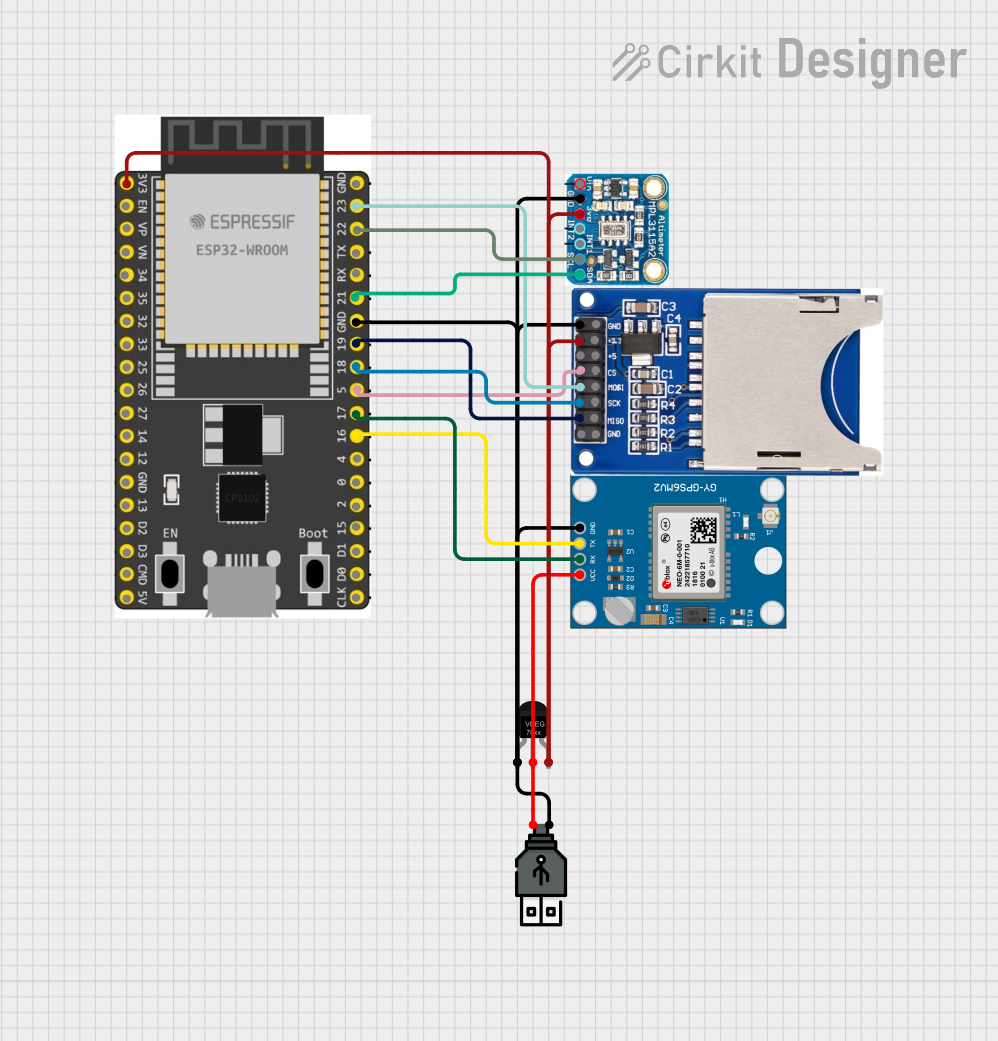
 Open Project in Cirkit Designer
Open Project in Cirkit Designer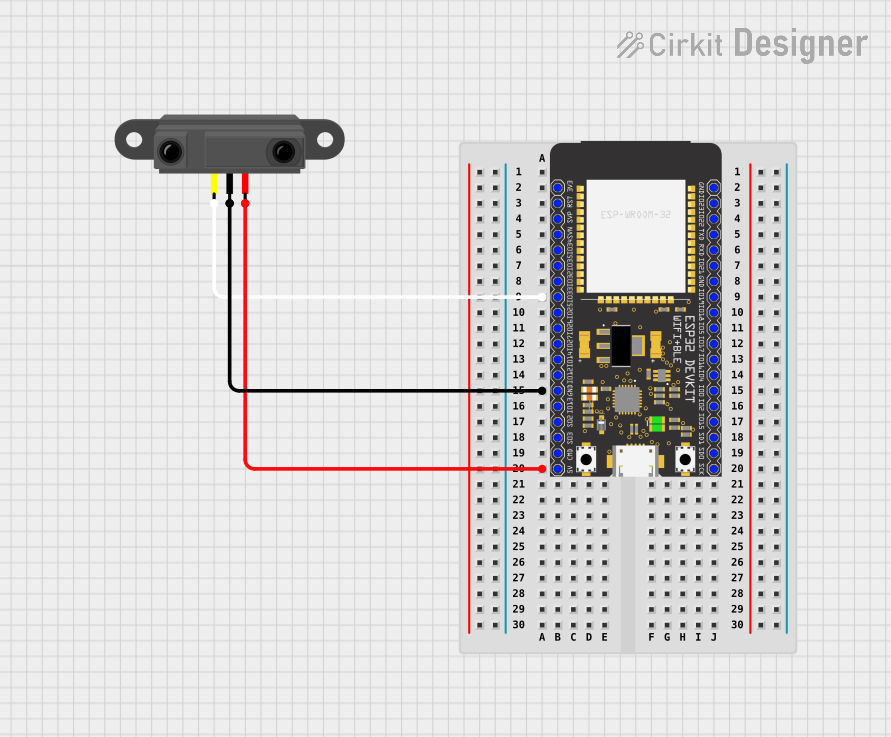
 Open Project in Cirkit Designer
Open Project in Cirkit Designer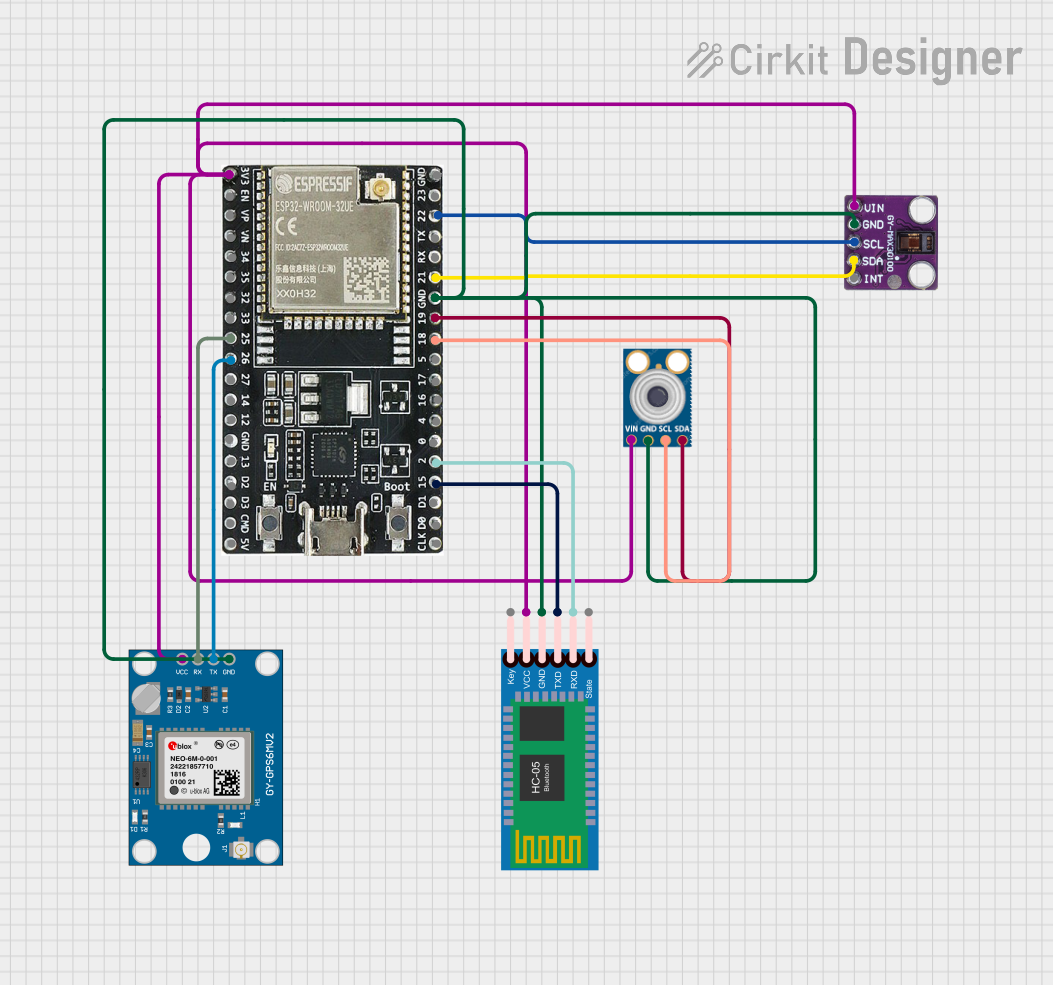
 Open Project in Cirkit Designer
Open Project in Cirkit Designer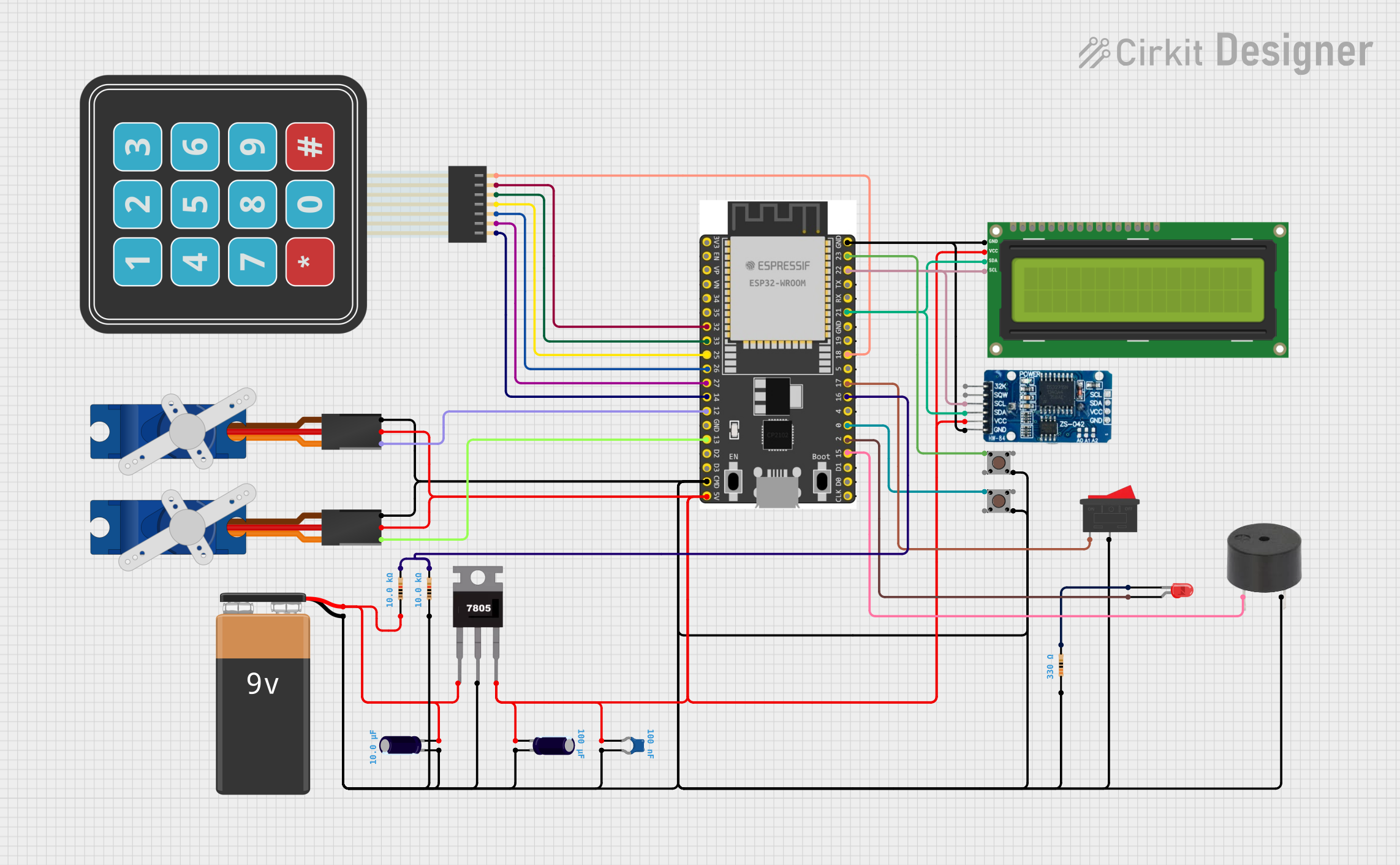
 Open Project in Cirkit Designer
Open Project in Cirkit DesignerExplore Projects Built with ESP32 WROOM 32

 Open Project in Cirkit Designer
Open Project in Cirkit Designer
 Open Project in Cirkit Designer
Open Project in Cirkit Designer
 Open Project in Cirkit Designer
Open Project in Cirkit Designer
 Open Project in Cirkit Designer
Open Project in Cirkit DesignerCommon Applications and Use Cases
- IoT devices and smart home automation
- Wireless sensor networks
- Wearable technology
- Industrial automation and control systems
- Robotics and drones
- Real-time data logging and monitoring
Technical Specifications
The ESP32 WROOM 32 is packed with features that make it a standout choice for developers. Below are its key technical specifications:
General Specifications
| Parameter | Value |
|---|---|
| Microcontroller | Tensilica Xtensa LX6 Dual-Core Processor |
| Clock Speed | Up to 240 MHz |
| Flash Memory | 4 MB (external SPI flash) |
| SRAM | 520 KB |
| Wi-Fi | 802.11 b/g/n (2.4 GHz) |
| Bluetooth | v4.2 BR/EDR and BLE |
| Operating Voltage | 3.3 V |
| Power Consumption | Ultra-low power modes available |
| Operating Temperature | -40°C to +85°C |
Pin Configuration and Descriptions
The ESP32 WROOM 32 module has 38 pins. Below is a summary of the pin configuration:
| Pin Number | Pin Name | Description |
|---|---|---|
| 1 | EN | Enable pin. Active high. Resets the chip when pulled low. |
| 2 | IO0 | GPIO0. Used to enter bootloader mode when pulled low during reset. |
| 3 | IO1 (TX0) | GPIO1. UART0 TX pin. |
| 4 | IO3 (RX0) | GPIO3. UART0 RX pin. |
| 5 | IO4 | GPIO4. General-purpose I/O pin. |
| 6 | IO5 | GPIO5. General-purpose I/O pin. |
| 7 | IO12 | GPIO12. Can be used as an ADC or touch sensor input. |
| 8 | IO13 | GPIO13. Can be used as an ADC or touch sensor input. |
| 9 | IO14 | GPIO14. PWM-capable GPIO pin. |
| 10 | IO15 | GPIO15. PWM-capable GPIO pin. |
| ... | ... | ... (Refer to the full datasheet for all pin details.) |
Note: Some pins have specific functions during boot (e.g., GPIO0 for bootloader mode). Refer to the datasheet for detailed pin behavior.
Usage Instructions
How to Use the ESP32 WROOM 32 in a Circuit
Powering the Module:
- The ESP32 WROOM 32 operates at 3.3 V. Ensure your power supply provides a stable 3.3 V to the
VCCpin. - Avoid supplying 5 V directly to the module, as it may damage the chip.
- The ESP32 WROOM 32 operates at 3.3 V. Ensure your power supply provides a stable 3.3 V to the
Connecting to a Microcontroller or PC:
- Use a USB-to-Serial adapter (e.g., FTDI or CP2102) to connect the ESP32 to your PC for programming.
- Connect the
TXpin of the adapter to theRXpin of the ESP32 and theRXpin of the adapter to theTXpin of the ESP32.
Programming the ESP32:
- The ESP32 can be programmed using the Arduino IDE or the ESP-IDF framework.
- To upload code, ensure GPIO0 is pulled low during reset to enter bootloader mode.
Connecting Peripherals:
- Use the GPIO pins to connect sensors, actuators, or other peripherals.
- For analog sensors, use the ADC pins (e.g., GPIO32, GPIO33).
Important Considerations and Best Practices
- Voltage Levels: Ensure all connected devices operate at 3.3 V logic levels. Use level shifters if interfacing with 5 V devices.
- Decoupling Capacitors: Place a 0.1 µF capacitor close to the power pins to stabilize the power supply.
- Antenna Placement: Avoid placing metal objects near the onboard antenna to ensure optimal Wi-Fi and Bluetooth performance.
- Boot Mode: To enter bootloader mode, connect GPIO0 to GND and reset the module.
Example Code for Arduino UNO
Below is an example of how to use the ESP32 WROOM 32 with the Arduino IDE to blink an LED:
// Example: Blink an LED connected to GPIO2 on the ESP32 WROOM 32
// Define the GPIO pin for the LED
#define LED_PIN 2
void setup() {
// Initialize the LED pin as an output
pinMode(LED_PIN, OUTPUT);
}
void loop() {
// Turn the LED on
digitalWrite(LED_PIN, HIGH);
delay(1000); // Wait for 1 second
// Turn the LED off
digitalWrite(LED_PIN, LOW);
delay(1000); // Wait for 1 second
}
Note: Ensure the LED is connected to GPIO2 with a current-limiting resistor (e.g., 220 Ω).
Troubleshooting and FAQs
Common Issues and Solutions
ESP32 Not Detected by PC:
- Ensure the USB-to-Serial adapter drivers are installed.
- Check the connections between the adapter and the ESP32.
Code Upload Fails:
- Verify that GPIO0 is pulled low during reset to enter bootloader mode.
- Check the baud rate in the Arduino IDE (default: 115200).
Wi-Fi Connection Issues:
- Ensure the correct SSID and password are used in the code.
- Check for interference from other devices on the same Wi-Fi channel.
Module Overheating:
- Verify the power supply voltage is 3.3 V.
- Avoid overloading the GPIO pins with excessive current.
FAQs
Q: Can the ESP32 WROOM 32 operate on 5 V?
A: No, the ESP32 operates at 3.3 V. Use a voltage regulator or level shifter for 5 V systems.Q: How many GPIO pins are available?
A: The ESP32 WROOM 32 has 34 GPIO pins, but some are reserved for specific functions.Q: Can I use the ESP32 with Bluetooth and Wi-Fi simultaneously?
A: Yes, the ESP32 supports simultaneous use of Bluetooth and Wi-Fi.Q: What is the maximum range of the Wi-Fi module?
A: The range depends on the environment but typically extends up to 100 meters in open space.
For more detailed information, refer to the official ESP32 datasheet and programming guides.